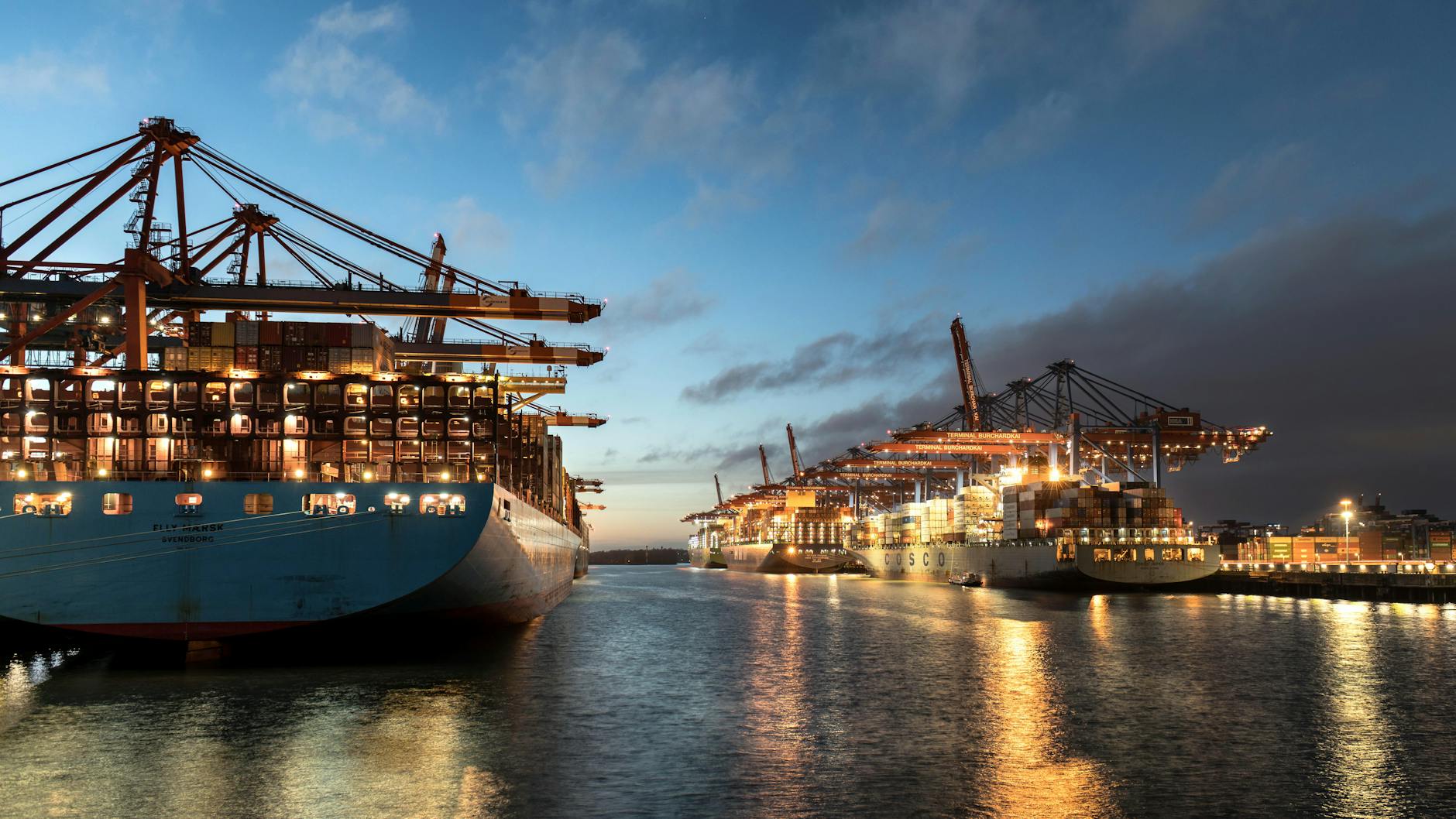Is Australia Ready for Fashion’s Logistics Revolution?

Analyzing Australia's Logistics Infrastructure
As a key figure in operations, I understand the intricacies involved in the logistics sector, especially here in the bustling enterprises of Sydney and Melbourne. Analyzing Australia's logistics landscape offers insight into its current capacities and capabilities. This encompasses everything from the operational efficiency of transportation networks to warehousing options. Understanding these elements is crucial in streamlining supply chains and enhancing distribution processes.
Australia's logistics sector, while robust, encounters significant hurdles. Among these, the most pressing are infrastructure limitations and regional supply chain variations. Aligning operations with unique regional demands can enhance efficiency but requires meticulous planning and execution. For instance, while the logistics needs in bustling city hubs like Sydney may differ vastly from more remote areas, ensuring seamless coordination across various regions is paramount.
Key to overcoming these challenges is the thoughtful application of modern solutions. Leveraging innovations, such as automated processes for pick and pack operations, can drive efficiency and accuracy. Additionally, the bustling boutiques on Chapel Street in Melbourne serve as a practical example of the intricate logistics that align with a fashion-forward market. These insights not only help in optimizing existing structures but also in paving the way for future growth and adaptability in a landscape that is constantly evolving within the fashion and retail industries. Implementing such strategies is vital for maintaining competitiveness and staying ahead.
Impact of Fashion’s Logistics Revolution
As a fashion retail innovator in Melbourne, understanding the changes in the logistics landscape is essential to staying ahead. The logistics revolution in fashion is transforming how we approach distribution and fulfillment. As we network through the bustling boutiques on Chapel Street, it's clear that innovation is key to success.
Emerging Trends and Innovations
The logistics sector in fashion is evolving rapidly, fuelled by advancements that resonate well with the creative spaces in Fitzroy. Trends such as flexible supply chains, eco-friendly processes, and precision manufacturing are taking center stage. The focus is now on achieving faster delivery times and enhancing customer experiences, echoing the dynamic blend of tradition and trend seen in places like the Queen Victoria Market.
Technological Disruptions
To keep up with demands, brands are embracing artificial intelligence, blockchain, and other cutting-edge technologies. These tools aid in streamlining operations, reducing costs, and minimizing errors — a necessity when navigating the fabric of both local markets and global demands. For those considering third-party logistics 3pl, this flexibility allows for improved scalability and efficiency, making it easier to meet fashion’s ever-changing demands.
Case Studies of Global Leaders
Brands globally are redefining logistics to harness the synergy of style and efficiency. Leading companies are successfully merging their operational frameworks with innovative solutions, offering a blueprint for others looking to enhance customer engagement and optimize resources. These examples serve as inspiration for Melbourne's entrepreneurs aiming to fuse traditional craftsmanship with modern-day business acumen.
Understanding these fundamental shifts in logistics can inspire you to create a unique narrative that highlights both your brand ethos and the timeless elegance found within Melbourne's thriving fashion community.
Integrating Third-Party Logistics (3PL)
Benefits of 3PL Partnerships
Leveraging third-party logistics (3PL) partnerships comes with multiple advantages for those in the fashion industry seeking to enhance their logistics networks. As a fashion retail innovator immersed in Melbourne's creative scene, the idea of optimizing operations is vital. Collaborating with a 3PL provider can lead to more efficient order fulfilment, reduce costs, and improve delivery times—all necessary when catering to your clientele who frequent hotspots such as the boutiques on Chapel Street.
With 3PL, you can benefit from:
-
Scalability: It provides flexibility to scale operations during peak seasons without the need for large investments in infrastructure or personnel.
-
Access to Expertise: 3PL providers bring specialized knowledge and experience, helping navigate the complexities of logistics and compliance regulations specific to the fashion sector.
-
Focus on Core Activities: By entrusting logistics management to experts, you can concentrate more on your brand's creative aspects and market positioning.
Selecting the right 3PL partner is akin to curating the perfect collection for your brand. It's imperative to consider how a partnership will complement your unique value propositions and align with your overarching business goals. In Melbourne's bustling fashion ecosystem, finding a synergy with a 3PL can not only enhance logistical prowess but also inspire innovation, ensuring your brand stands out in spaces like those bustling artisanal markets at Queen Victoria Market where tradition and trend converge.
Overcoming Integration Challenges
Seamless Technology Adoption
In the heart of Melbourne's creative scene, where innovation and practicality converge, lies a key challenge: integrating new technology in fashion logistics. It's essential to blend technology seamlessly into established systems without causing disruptions. Imagine channeling the inspiration from Melbourne’s creative spaces in Fitzroy, where diverse ideas meet, resulting in new opportunities for innovation. Similarly, when adopting new technology, consider using incremental steps. Start small by testing new systems on a smaller scale, evaluating their impact, and gradually expanding implementation across broader operations.
Addressing Stakeholder Concerns
Effectively addressing stakeholder concerns requires clear communication and evidence-based strategies. One way to inspire confidence is through showcasing the tangible benefits, much like the eclectic fashion pieces found in local artisanal markets which capture attention through unique qualities. Emphasize how 3pl fulfillment services can streamline operations, reduce costs, and improve delivery efficiencies. By presenting data and case studies demonstrating successful 3PL integrations, you can reassure stakeholders of the potential positive outcomes.
Ensuring Supply Chain Security
Security in the supply chain is paramount, particularly when integrating third-party providers. It's akin to crafting a seamless fashion piece where each element contributes to its overall integrity. Prioritize strong partnerships with 3PL providers, ensuring they uphold security protocols and maintain transparency in operations. Regular audits and performance metrics should be established to monitor and ensure ongoing compliance. This will minimize risks and align third-party logistics operations with your company’s high standards, fostering long-term partnerships based on trust and mutual success.
Future-Forward Fashion Practices
Building Resilient Networks
As we embark on creating alert and agile fashion businesses, the Melbourne fashion scene offers a rich backdrop for understanding the importance of resilient networks. Establishing durable supply chains is akin to the creative interconnectedness seen in the bustling boutiques on Chapel Street. Here, you gain perspective on how to cultivate flexible partnerships and cultivate reliable resource pathways that can withstand day-to-day fluctuations.
Leveraging Data for Efficiency
Harnessing the power of data analytics can transform how you strategize and operate within the fashion sector. In the vibrant energy of Melbourne's creative spaces in Fitzroy, there's a lesson to be learned: insight and intuition can coalesce to drive performance. Using real-time data to predict trends, manage inventory, and optimize logistics can turn these insights into actionable strategies that propel your business forward.
Continuous Improvement and Adjustments
Melbourne's ever-pulsating style mantra reflects the need for constant evolution and adaptability. Like the artisanal markets in Queen Victoria Market, where vendors reinvent and reimagine their offerings, fostering a culture of continuous improvement is pivotal. Encourage regular evaluations of processes and remain open to embracing change to meet the demands of an enthusiastic market.
Through embracing resilient strategies and leveraging unique Melbourne insights, you're not just keeping pace with the fashion industry. You're setting trends, innovating processes, and crafting a sustainable future one creative spark at a time.


